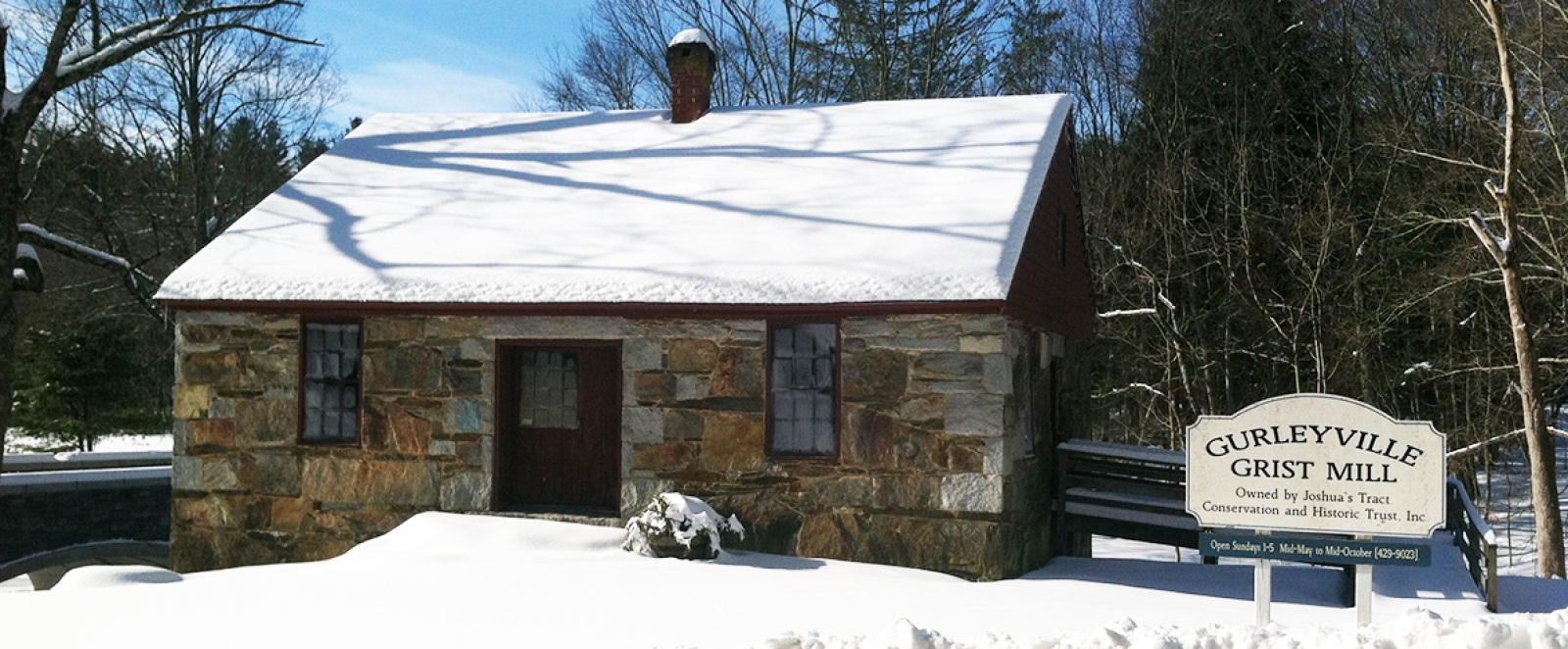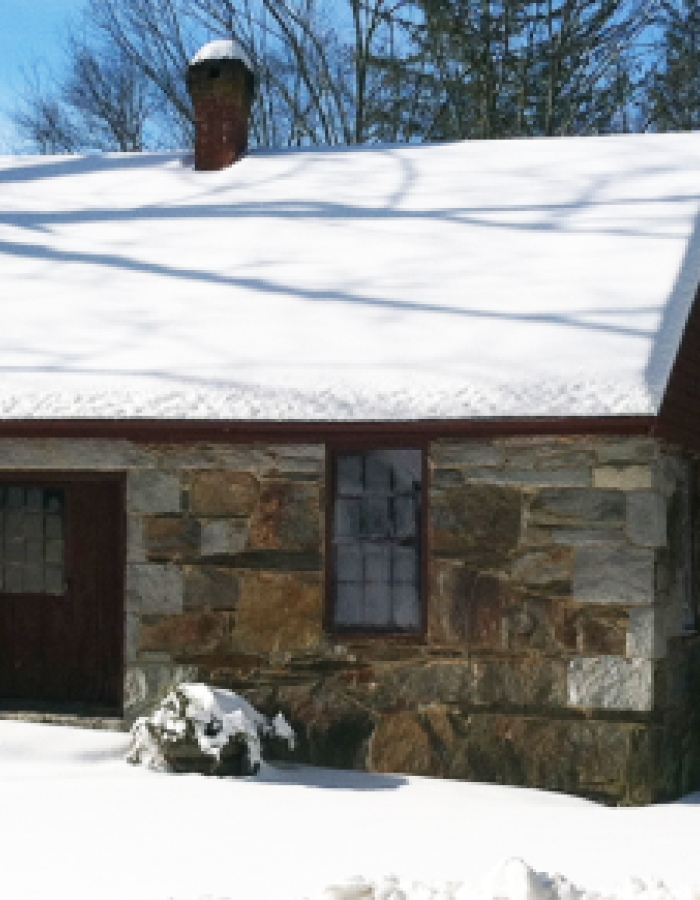The Gurleyville Grist Mill, located on the beautiful Fenton River, offers a unique opportunity to observe rural 19th century gristmill technology. It contains a complete system of preserved milling equipment. This is not a restoration; here visitors see the equipment as it was operated over many decades and to the middle of the 20th century.
A sawmill was built on this site in 1723 and the grist mill was added around 1750. The latter was replaced in the 1830s by the present mill that continued to operate until 1941. An attached sawmill was destroyed by heavy snow in the early 1950s and the dam was washed out in the winter of 1958-59. It had served for 200 years, and had been repaired and maintained but never modernized. The gristmill itself, constructed of stone, remains in a remarkable state of preservation.
The property was bought in 1979 by The Joshua’s Tract Conservation and Historic Trust with private and public funding, including a grant from the federal Heritage Conservation and Recreation Service through the Connecticut Historical Commission.
The Gurleyville Grist Mill was for some years operated by the family of Wilbur Lucius Cross, a four-term governor of Connecticut. The nearby miller’s cottage was his birthplace. That house in not open to the public, but an extension contains a small museum open whenever the mill is.
The only stone mill of its kind in Connecticut, the Grist Mill is built of several types of local rocks: garnetiferous schist, gneiss, granite, pegmatite and quartzite. Located beside the banks of the trout laden Fenton River, the mill houses complete, perfectly preserved equipment. Two sets of grinding stones are as they were when last used. Conveying devices, the silk bolter for flour sifting, shafts, and huge gears are intact. Unusual in gristmills is the basement, where a huge water wheel once turned from water diverted under the building from the Fenton River.
Visitors to the Gristmill can observe and operate a miniature working model of the mill. This working model, obtained with a grant from The 1772 Foundation, allows visitors to see how the mechanism of the mill used to operate.The model greatly increases the educational impact of the mill tour, especially for children, who love to turn the crank and watch all the parts move.
The Trust owns the mill, the miller’s house across Stonemill Road, and land on both sides of the Fenton River, including Michael’s Preserve, a natural area on the west side. The blue-blazed Nipmuck Trail crosses the property, following the river where the remains of several mill sites and raceways are visible.















